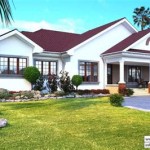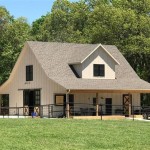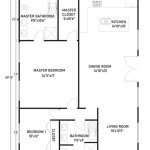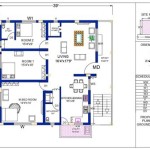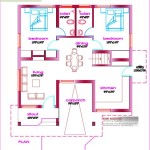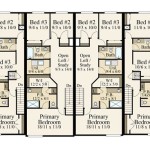Free A-Frame Cabin Plans: A Comprehensive Resource Guide
A-frame cabins, characterized by their steeply angled rooflines that extend to the ground, offer a unique blend of aesthetic appeal, structural efficiency, and relative ease of construction. This architectural style has enjoyed enduring popularity, especially in recreational settings and smaller living spaces. As such, numerous resources offer free A-frame cabin plans, catering to individuals seeking to build their own retreats without incurring significant initial design costs. This article provides a comprehensive guide to locating and utilizing these free resources, highlighting key considerations for successful A-frame cabin construction.
The availability of free A-frame cabin plans stems from various sources. Architectural firms and designers sometimes offer simplified versions of their designs as promotional material. Construction material suppliers may provide plans contingent upon the purchase of their products. Furthermore, dedicated online communities and enthusiast groups contribute their designs and experiences, fostering a collaborative environment for DIY building projects. These plans can act as a starting point, allowing builders to customize and modify the designs to suit their specific needs, site conditions, and budget constraints.
Understanding the Scope of Free Plans
It is crucial to recognize the varying degrees of comprehensiveness offered by free A-frame cabin plans. Some plans may consist of basic blueprints outlining the overall dimensions and structural framework, while others might include detailed construction drawings, material lists, and step-by-step instructions. A plan's level of detail often reflects its intended audience and the purpose for which it was created. A promotional plan from a lumber yard, for example, might prioritize material usage from their inventory and only offer enough detail to demonstrate the feasibility of the structure.
Prior to committing to any free A-frame cabin plan, a thorough review is essential. This review should encompass structural integrity, adherence to local building codes, and suitability for the intended use. The absence of detailed mechanical, electrical, and plumbing (MEP) information is common in free plans, requiring builders to supplement the provided information with expert consultation. It is highly advisable to consult with a structural engineer to ensure the plan meets all safety and regulatory requirements, especially in regions prone to extreme weather conditions such as heavy snow loads or high winds. Failing to adequately address these factors can compromise the structural integrity of the cabin and potentially lead to hazardous situations.
Customization is another aspect that requires careful consideration. While free plans provide a foundation, they may not perfectly align with individual preferences or site-specific constraints. Modifications to the size, layout, or materials necessitate a reassessment of the structural design. Changes to window and door placements, for instance, can impact load-bearing capabilities and require reinforcement. Therefore, any significant alterations should be reviewed by a qualified professional to ensure code compliance and structural stability.
Locating and Evaluating Free A-Frame Cabin Plan Resources
The Internet serves as the primary repository for free A-frame cabin plans. Websites dedicated to DIY projects, woodworking, and cabin construction often feature collections of plans contributed by both professionals and amateurs. Government agencies, such as forestry departments, may also offer free plans for recreational cabins as part of their public outreach programs. These plans are often designed to minimize environmental impact and promote sustainable building practices.
When searching for free plans online, it is important to consider the credibility of the source. Reputable websites typically provide information about the designer or author, along with contact information for inquiries. User reviews and ratings can also offer valuable insights into the quality and accuracy of the plans. It is prudent to approach plans from unverified sources with caution, as they may contain errors or omissions that could compromise the integrity of the structure.
Several keywords can be used to refine the search for free A-frame cabin plans. These include "free A-frame cabin blueprints," "DIY A-frame cabin plans," "small A-frame cabin plans free," and "A-frame cabin building plans free download." Combining these keywords with specific size preferences (e.g., "800 sq ft A-frame cabin plans free") can yield more targeted results. Online architectural plan repositories often have categories dedicated to small homes and cabins, which can also be a valuable resource.
Once a potential plan has been identified, a thorough evaluation is crucial. This evaluation should include the following:
*Clarity and Completeness:
Are the drawings clear, accurate, and easy to understand? Does the plan include all necessary dimensions and specifications? Are there detailed instructions for each stage of the construction process? *Material List:
Does the plan include a comprehensive list of materials required for construction? Are the materials readily available and affordable? Are there suggested alternatives for materials that may be difficult to source? *Structural Integrity:
Does the plan appear structurally sound? Are there adequate provisions for load-bearing walls, roof support, and foundation stability? Does the plan account for local weather conditions and seismic activity? *Code Compliance:
Does the plan appear to comply with local building codes and regulations? Are there any specific requirements that need to be addressed before construction can begin? *User Feedback:
Have other builders successfully used this plan? Are there any known issues or challenges associated with the design? Online forums and communities dedicated to DIY construction can provide valuable feedback from other builders.Important Considerations Before Construction
Even with a well-documented and seemingly complete free A-frame cabin plan, several crucial considerations remain before commencing construction. These considerations relate to site preparation, permitting, and skilled labor availability.
Site preparation involves clearing the building site, leveling the ground, and establishing a suitable foundation. The type of foundation will depend on the soil conditions and the size and weight of the cabin. Common foundation options include concrete slabs, pier and beam foundations, and crawl spaces. A geotechnical survey may be necessary to assess the soil's load-bearing capacity and drainage characteristics. Proper drainage is essential to prevent water damage to the foundation and the surrounding structure.
Obtaining the necessary building permits is a crucial step that should not be overlooked. Building codes vary significantly between jurisdictions, and failure to comply with these codes can result in fines, delays, or even the demolition of the structure. The permitting process typically involves submitting the building plans to the local building department for review. The building department will assess the plans to ensure they meet all applicable codes and regulations. This process may require revisions to the plans to address any deficiencies. It is advisable to consult with the local building department early in the planning process to understand the specific requirements and avoid potential delays.
The availability of skilled labor is another important consideration. While A-frame cabins are generally considered to be relatively simple to construct, certain aspects of the construction process may require specialized skills. These include framing, roofing, electrical wiring, and plumbing. If the builder lacks these skills, it may be necessary to hire subcontractors to perform these tasks. Obtaining multiple quotes from subcontractors is advisable to ensure competitive pricing. Furthermore, it is important to verify the subcontractors' qualifications and licenses to ensure they are qualified to perform the work.
Financing should also be carefully planned. Even with free plans, the cost of materials and labor can be substantial. Securing financing early in the process can help avoid delays and ensure the project stays within budget. Options for financing include personal savings, loans from family and friends, and construction loans from banks and credit unions. Comparing interest rates and loan terms from different lenders is essential to secure the best possible financing arrangement.
Finally, safety should be a paramount concern throughout the construction process. Construction sites can be hazardous environments, and it is important to take precautions to prevent accidents. This includes wearing appropriate personal protective equipment (PPE), such as hard hats, safety glasses, and work gloves. Following safe work practices is also essential, such as using ladders and scaffolding properly, and avoiding working in hazardous weather conditions. First-aid training is highly recommended for anyone involved in the construction process.
Modifying and Adapting Free A-Frame Cabin Plans
As previously noted, free A-frame cabin plans often serve as a starting point, requiring modifications to suit specific needs and preferences. One common modification involves adjusting the size and layout of the cabin. For example, a builder may want to add a loft to increase living space or reconfigure the interior to create a more open floor plan. These modifications necessitate a careful reassessment of the structural design. Adding a loft, for instance, will increase the load on the supporting walls and foundation, requiring reinforcement to ensure structural stability.
Another common modification involves altering the materials used in construction. Free plans may specify materials that are difficult to source or that are not aesthetically pleasing to the builder. Substituting alternative materials can impact the structural performance and energy efficiency of the cabin. For example, replacing wood siding with metal siding may require adjustments to the framing to accommodate the different weight and attachment methods. Choosing energy-efficient windows and insulation can significantly reduce heating and cooling costs, but these choices should be made in consultation with an energy efficiency expert to ensure proper installation and performance.
Adapting the cabin to the specific site conditions is another important aspect of modification. Factors such as slope, soil type, and orientation can influence the design and construction of the cabin. Building on a sloped site may require terracing or the use of a pier and beam foundation to create a level building platform. Understanding prevailing wind patterns and solar orientation can inform the placement of windows and doors to maximize natural light and ventilation while minimizing energy consumption.

Free E Book Guaranteed Building Plans 200 House 2 A Frame Of Cabins

A Frame House Plans Free Cabin Floor

A Frame House Plan With Deck

How To Build This A Frame Cabin That Will Pay For Itself Hipcamp Journal

A Frame House Plan 24 Feet High

14 X14 Tiny A Frame Cabin Plans By Lamar Alexander

A Frame House Plans Everything You Need To Know Field Mag

22 Beautiful 14x14 A Frame Cabin Plans Elegant Free Blueprints Downlo Playhouse House

A Frame Charming Cottage Style House Plan 8594

24 X A Frame Cabin Plan Project Small House

